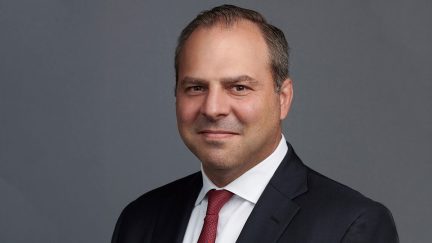For more stories like this, sign up for the PLANSPONSOR NEWSDash daily newsletter.
MassMutual Paper Serves As Primer for PRT Considerations
“While PRT can be a highly effective tactic for plan sponsors to reduce risk and shift liabilities off their books,” MassMutual says, “it’s possible to increase pension costs and risks if a PRT is not executed with long-term goals in mind.”
In a new white paper, MassMutual discusses how pension risk transfers (PRTs) can be successfully conducted.
“A long-term view is especially important for sponsors of DB [defined benefit] plans when managing DB risks and liabilities,” MassMutual says in the paper, “Pension Risk Transfer: Insights from an Institutional Risk Manager About How to Successfully De-Risk and Transfer Pension Obligations.”
“While PRT can be a highly effective tactic for plan sponsors to reduce risk and shift liabilities off their books,” MassMutual continues, “it’s possible to increase pension costs and risks if a PRT is not executed with long-term goals in mind.”
A sponsor should first assess its pension funding status, MassMutual suggests. They should then look at the quality of their assets, the makeup of their employee and retiree populations, the quality of their participant data and longer-term goals.
As sponsors have come to realize that life insurers are better equipped than they are to manage the long-term risks of their pensions, the PRT market has been growing steadily in recent years, MassMutual says.
Sales of single premium PRT product sales in the U.S. were $23.9 billion in 2017, up 68% from 2016, according to the LIMRA Secure Retirement Institute. The 10-year bull market has helped improve the health of pension funding ratios, putting many pensions in a position to conduct a PRT or other risk mitigation strategies.
Because the low interest rate environment has persisted for so long, plan sponsors now accept this as the “new normal.” It can actually work in their favor as they look to borrow money to improve pension funding. In addition, liability driven investing (LDI) has allowed sponsors to lock in gains, and the tax reform has prompted companies to increase their contributions through mid-September 2018, when the current 35% corporate tax rate deductions dropped to 21%.
“Additionally, the federal government is unintentionally encouraging PRT by passing on higher costs for backstopping pensions to employers,” MassMutual says. “Premiums for the Pension Benefit Guaranty Corp. have climbed dramatically and continue to rise.” In addition, 35 years from now, life expectancies are expected to rise 126%. All of these factors have prompted many pension plan sponsors to move their long-term liabilities and risks off of their books.
The life insurer’s point of view
To achieve this, MassMutual looked at what life insurers consider when handling PRT. If a pension is frozen by limiting eligibility to existing participants, this contains future risks. Many plans that do this switch from a DB plan to a defined contribution (DC) plan.
Sponsors can also offer deferred participants a lump-sum buyout, eliminating the risks of future payments. Once a plan is frozen, sponsors should then focus on their investment strategy, looking to match payment liabilities with investment durations, sometimes reducing exposure to equities or reevaluating the mix of the investments within the portfolio, which is known as LDI.
A sponsor will also be in a stronger position if they simplify the benefits available through the plan. “This means that the more straightforward a DB plan, the easier it is for an insurer to evaluate its risks and price it accordingly,” MassMutual says.
Another factor to consider is the type of pension plan it is. A cash balance plan, for example, allows a participant to select either a stream of income or a lump-sum payment. Not knowing when a participant will retire or which option they will select raises the financial risks for a sponsor, MassMutual says.
Some pensions include cost of living adjustments (COLA), payment of lump sums, early or late retirement, disability payments and supplemental benefits such as joint-and-last-survivor benefits, and they could also allow participants to make additional contributions; all of these options increase the pension plan’s complexity and, therefore, risk.
Insurers consider all of these risks when assessing a PRT, and they find that not all of the risks are equal, according to MassMutual. Today, they are looking more closely at mortality risks, especially for jumbo plans with more than $500 million in assets. They are also evaluating the makeup of a company’s workforce, as white collar workers tend to live longer than blue collar workers.
Insurers also consider how a pension plan’s assets are invested. “Does the employer intend to transfer liquid assets, assets in kind (AIK) or some combination of the two?” Mass Mutual asks. “It’s an important consideration because not all insurers accept AIKs and most that do impose limitations on them.” The sponsor can also take out a loan to boost pension reserves.
Because many companies conduct PRTs late in the year, it is wiser for a sponsor to start the process early, before insurers are faced with more transactions and costs rise, MassMutual says.
A sponsor’s fiduciary responsibility
The sponsor also must ensure that it is obtaining the safest annuity available, according to the Department of Labor’s (DOL’s) Interpretive Bulletin 95-1. “A fiduciary must evaluate a number of factors relating to a potential annuity provider’s claims-paying ability and creditworthiness,” MassMutual says. “Reliance solely on ratings provided by insurance rating agencies would not be sufficient to meet this requirement.
“Transferring pension assets to an insurer is a transfer of liability and is, therefore, a fiduciary act,” MassMutual continues. “That means the plan sponsor must act in the best interest of employees.” They also need to evaluate the “quality and diversification of the annuity provider’s investment portfolio, and level of the insurer’s capital and surplus.”
You Might Also Like:
LIMRA: Q3 Marks Highest Recorded Quarterly Sales for PRT Buy-In Products
With PRT Rapidly Evolving, Insurers Must Remember Priority No. 1
MetLife Finds Most Companies Intend to Divest Pension Liabilities Within 5 Years
« Principal to Launch Online Chat for Retirement Plan Administration Questions


